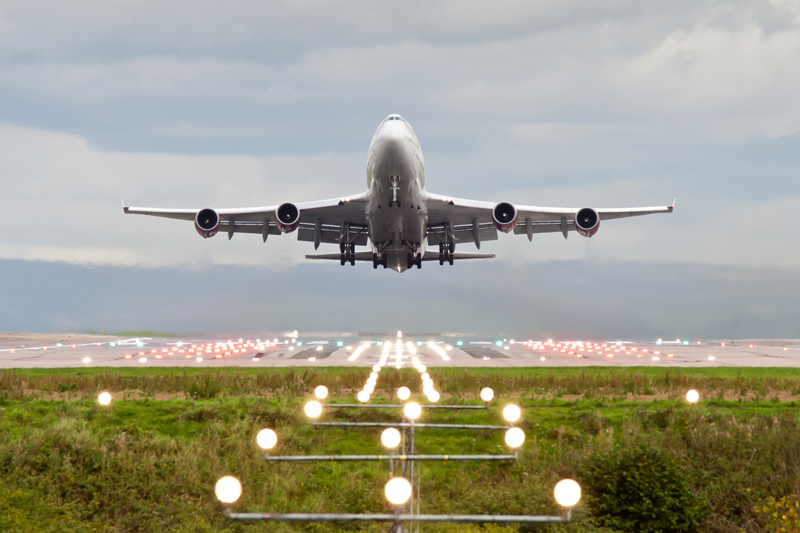Gold prices set for weekly gains on dovish Fed outlook; silver near record high
Proactive Investors - November saw both Airbus and Rolls-Royce (LON:RR) lay out ambitious plans to produce hydrogen fuelled aircraft, citing the zero-carbon fuel as a potential solution to the aviation industry’s ‘green’ problem.
Dubbing the fuel as “one of the most promising alternatives to power a zero-emission aircraft,” Airbus laid out plans to fly its hydrogen fuelled plane within the 2020s.
Meanwhile, Roll-Royce, alongside partner easyJet (LON:EZJ), fired up its first ever hydrogen-powered jet engine, suggesting the tests were a “milestone” in reshaping the “future of flight”.
Business Secretary Grant Shapps even added that hydrogen could be the answer to the worlds much-needed “shift to guilt-free flying”.
Needless to say, hydrogen has become a much talked about topic in aviation, which under the International Air Transport Association trade body is aiming for net-zero emissions by 2050.
But how viable is it as a replacement to conventional fuel really?
Hydrogen is produced by splitting water molecules, sometimes through electrolysis, but more often using gas, oil or coal.
This means that as a ‘low-carbon’ fuel, hydrogen can only really be as green as the method used for production, considering the emissions released during this process.
While the production of hydrogen gas is a relatively simple process, in order to be used in aircraft it would likely have to be liquified.
This is where issues begin to arise, given the energy intense process of cooling it to almost -253C.
Clean energy expert Michael Liebreich outlined that liquifying 7,500 tonnes of hydrogen per day to meet Heathrow’s fuel needs would require roughly 2.8GW of electricity, “similar to the output of Hinkley Point C.”
Hydrogen is therefore "highly volatile,” said geopolitical analyst Irina Tsukerman, and would have to be kept at extremely low temperatures in aircraft, or risk evaporating and expanding.
Even this is not hydrogen’s biggest downside though.
While Airbus outlined that by stacking hydrogen fuel cells “the megawatt levels of power – which are needed for an electric aircraft – are achievable,” experts tend to disagree, suggesting the amount of the fuel needed for aircraft would be excessive.
Hydrogen, while being “one of the hottest items in the long-term pursuit of renewables,” requires about four-times the volume of conventional jet fuel for the same amount of power, according to Tsukerman.
This means “future aircraft might have to be redesigned completely to allow for the space issue and safe transportation,” she outlined.
Michael Liebreich added: “The difficult bit is that even for short haul, one third of your fuselage is liquid hydrogen at take off.”
“Longhaul is completely out,” he warned.
The UK has a lack of infrastructure to carry hydrogen between airports too.
Liebreich suggested that for Heathrow airport alone “2,340 trucks” would need to deliver liquified hydrogen every day.
While hydrogen in aviation is indeed “fun to think about,” as Liebreich says, and is gaining lots of public attention, he classes it as “a dead end.”
Some commentators have been less critical though, seeing past the storage and transport issues.
Discussing the recent breakthrough in nuclear fushion, FuelCell Energy (NASDAQ:FCEL) boss Tony Leo said: “We will be able to use it [nuclear fusion] to produce hydrogen which can be stored more easily and used to power a boat or plane."
Rinaldo Brutoco, chief executive of aerospace firm H2 Clipper, suggests hydrogen is the “only conceivable way” to replace fossil fuels in transport industries in the future.
The fact remains though, that with current technology a Boeing (NYSE:BA) 747 would require 1mln litres of hydrogen to deliver the same range as 0.25mln litres of conventional fuel, as pointed out by Liebreich and Tsukerman.
So, whether breakthroughs will see hydrogen lead the way in powering aircraft, or whether it is a non-starter remains to be seen.
Firms will have to tackle the huge storage and infrastructure hurdles if they wish to see it take this leading role, while also ensuring they source hydrogen from low-emissions fuels.
Rolls-Royce has developed a line of engines with improving efficiency, perhaps because of their more realistic prospects for powering green flight.
Its Ultrafan engine, due to be tested in 2023 and rolled out commercially by 2030 will run on sustainable aviation fuels, made from waste, which emit 80% less CO2 than conventional fuel.
